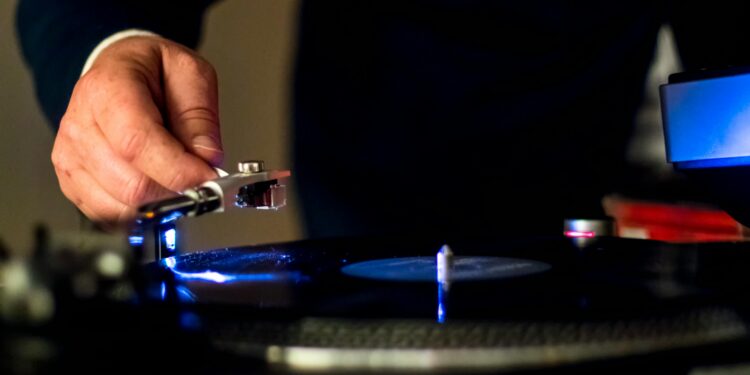The Revival of Analogue Media in the Digital Age: Vinyl Records and 5 Other Options

In an era dominated by streaming platforms and cloud-based libraries, one might assume that analogue media would be long forgotten. Yet, vinyl records and other analogue formats are experiencing an extraordinary revival. From the resurgence of cassette tapes to the cult following of film photography, the analogue renaissance suggests that convenience isn’t everything. People crave physicality, ritual, and imperfection—qualities digital media can’t fully replicate.
This revival isn’t just about nostalgia. It reflects broader cultural and psychological shifts as audiences rediscover the tactile pleasure of interacting with media in physical forms.
Vinyl Records: The Flagship of Analogue Revival
Leading the charge is the undeniable return of vinyl records. Once considered obsolete in the age of CDs and MP3s, vinyl has become the format of choice for collectors and music enthusiasts alike. According to industry reports, vinyl sales have surpassed CDs for the first time in decades, proving this is more than a niche hobby.
Why vinyl? The appeal is multifaceted:
- Sound quality: Many audiophiles argue that the warm, rich sound of vinyl is unmatched by digital compression.
- Ritual: Playing a record involves physical interaction—sliding it from its sleeve, placing the needle—that turns listening into an event.
- Art and design: Album covers, lyric inserts, and limited edition vinyl records add visual and tactile depth to the experience.
At its heart, vinyl listening is a slower, more mindful engagement with music. Unlike the skip-and-scroll culture of streaming, records encourage immersion and patience.
Cassette Players: From Obsolete to Obsession
Another unexpected comeback has been the cassette player. While many dismissed tapes as fragile and low-quality, they’re reemerging as a DIY-friendly, budget analogue option. Independent artists are releasing albums on both vinyl records and cassettes, appreciating the affordability and the raw, lo-fi aesthetic.
For fans, cassettes represent intimacy. The format evokes the mixtape culture of the ’80s and ’90s, where gifting a cassette was a personal expression. Its imperfections—tape hiss, rewinding, warping—make each listen unique.
In contrast to the infinite, polished world of Spotify or Apple Music, the cassette player offers imperfection as a form of authenticity: a trend that permeates throughout today’s mainstream soundscapes, from cosy games to TikToks and even today’s top themed casual games
Analogue Synthesisers: Hands-On Creativity
Beyond playback, the revival extends to production tools like analogue synthesisers. Despite digital synths offering near-limitless sound libraries, musicians continue to value analogue gear for its tactile controls and organic warmth.
Turning knobs and patching cables isn’t just about nostalgia—it’s about reclaiming a hands-on relationship with sound. Musicians describe analogue synths as more alive, with subtle variations and unpredictability that digital often sterilises.
The growing modular synth community reflects this trend. It’s not just about producing music, but about engaging in play, experimentation, and tactile discovery.
Film Photography: Freezing Time the Old Way
Though not a musical format, film photography is often mentioned alongside vinyl records in the analogue resurgence. Like vinyl, film captures imperfection and unpredictability. Each frame carries weight, and the delay in processing makes the reveal more meaningful.
Film cameras have seen rising demand on resale platforms, while companies like Kodak have ramped up film production to meet new demand. In a digital culture obsessed with instant results, film offers patience, intentionality, and artistry.
Reel-to-Reel Recorders: The Audiophile’s Treasure
For a small but devoted niche, reel-to-reel tape machines are experiencing renewed interest. These bulky, high-maintenance devices offer unparalleled analogue sound quality. Collectors and high-end audiophiles prize them for their dynamic range and authenticity.
Though impractical for casual listeners, reel-to-reel recorders embody the analogue ethos: slow, deliberate, and immersive. Their scarcity only adds to their mystique, turning them into objects of prestige within music culture.
Printed Zines and DIY Media
Finally, the analogue comeback isn’t limited to sound. Printed zines—small, independently published booklets—are thriving again. Much like vinyl records or cassettes, zines offer tactile engagement in an era of fleeting digital content. They thrive in underground music communities, fan cultures, and indie publishing.
The appeal is the same: imperfection, personalisation, and a sense of rebellion against polished, corporate media. Holding a zine feels like holding a piece of the creator’s identity, much like owning a cassette mixtape or limited-run record pressing.
Why Analogue is Winning in a Digital World
The analogue revival can’t be explained by nostalgia alone. Social, psychological, and cultural forces converge to drive this movement:
- Tactile engagement: People crave experiences that involve touch, weight, and texture. Streaming is frictionless but intangible.
- Ritual and mindfulness: Playing vinyl records or winding a cassette slows time, transforming consumption into a ceremony.
- Imperfect authenticity: Scratches, hiss, or film grain remind us of human presence and imperfection.
- Cultural identity: Owning analogue media signals individuality, separating true fans from casual streamers.
- Community building: Record shops, film labs, and zine fairs provide physical hubs for connection.
In short, analogue formats are thriving because they offer what digital media lacks: humanity.
Generational Shifts: Why Gen Z Loves Analogue
Surprisingly, the analogue wave isn’t led by nostalgic boomers, but by Gen Z and millennials. Raised on unlimited access to digital media, younger audiences are embracing analogue precisely because it feels rare and special.
Platforms like TikTok are filled with collection tours of vinyl records, cassette unboxings, and film photography tutorials. For a generation accustomed to algorithms and instant gratification, analogue provides contrast: a slower, curated way of experiencing culture.
This shift to vinyl records and analogue media also reflects a rejection of disposable culture. In the same way that sustainable fashion emphasises longevity, analogue media emphasises permanence and value.
Conclusion: Imperfection as Innovation
The revival of vinyl records and other analogue formats isn’t a rejection of digital—it’s a complement. Streaming provides convenience and accessibility, while analogue offers depth and ritual. Together, they reflect the dual desires of modern culture: speed and ease on one hand, slowness and meaning on the other.
Whether it’s cueing up a record, loading a cassette player, snapping a roll of film, or twisting knobs on an analogue synthesiser, analogue rituals reconnect us with the physical. They remind us that imperfection is not a flaw—it’s the very thing that makes art and culture human.
As we move deeper into the digital age, the analogue revival will continue to shape how we consume, create, and connect. And while the formats may seem old, their power to inspire feels brand new.








